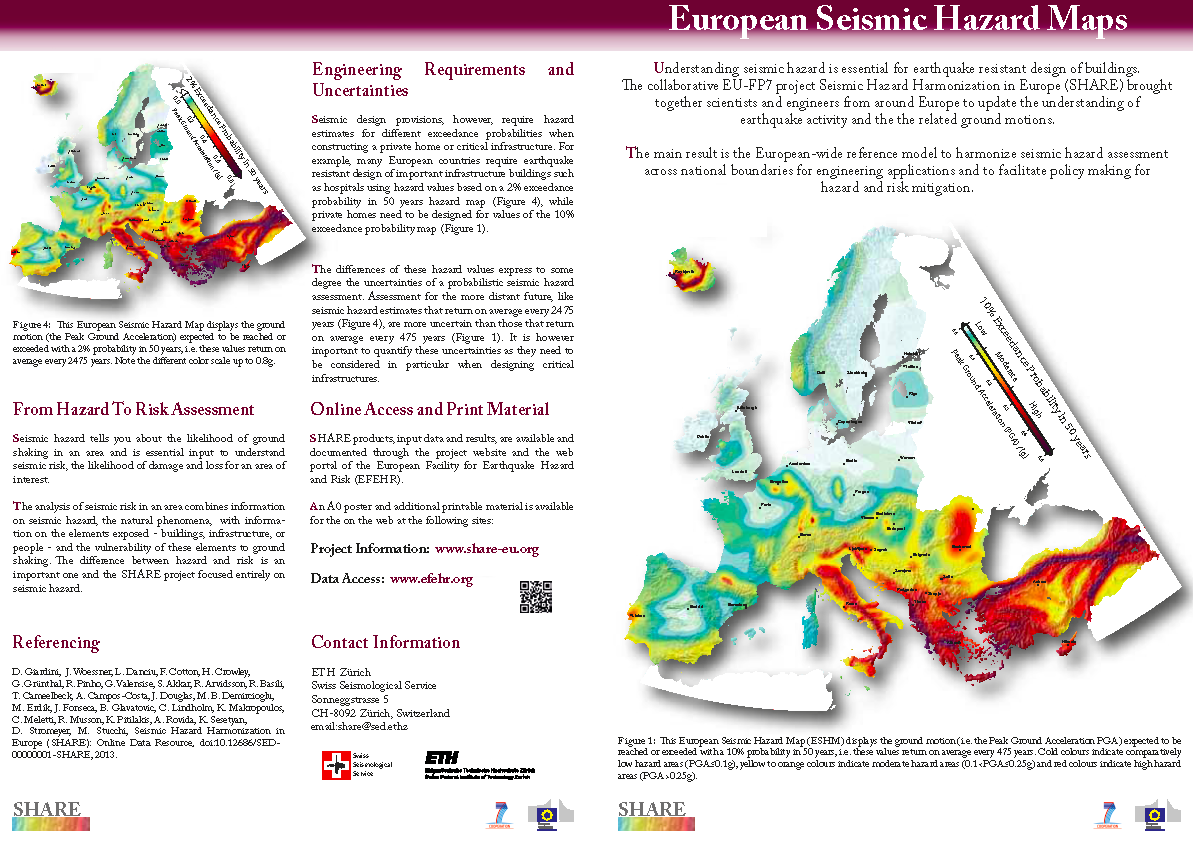The assessment of seismic hazard
SHARE will achieve progress beyond state-of-the-art on several fronts in the assessment of Probabilistic Seismic Hazard.
Work across boundaries
Seismic hazard is traditionally assessed at national scale and within national boundaries, to serve as input for various regulatory applications, making it impossible to achieve regional harmonization, for lack of data or limited geographical extent. The previous European project SESAME/ESC was a first attempt to work at the integrated Euro-Med scale.
Contribution of SHARE: National experts will participate with their knowledge in building regional consensus models, transcending the traditional administrative and disciplinary boundaries.
Formal elicitation of expert opinions
Combining the models and opinions of more than one hundred experts from various disciplines requires a structured mechanism for elicitation, to ensure that the different expert opinions can be represented in a composite model. Much progress has been achieved in formalizing the process by which consistent hazard estimates can be obtained for critical facilities. The SSHAC (Senior Seismic Hazard Analysis Committee) guidance has been developed to provide technical and procedural guidance on how to perform a consistent PSHA.
Contribution of SHARE: SHARE will adopt, for the first time in a regional study of this dimension in Europe, a uniform SSHAC Level-3 procedure, adapted to the needs of the present project. In SHARE, both the WP leaders (in their role as Technical Integrators) and the experts will share the responsibility and intellectual ownership of the results. The additional responsibility of the WP leaders will be formalized in WP5.
Full treatment of aleatory and epistemic uncertainties
In recent high-level PSHA studies it has become evident that the mean hazard results are driven to high values at low probabilities by the high uncertainties associated to ground-motion models and other input data for hazard. The standard practice in the seventies and eighties was to include only a reduced variability of the strong-motion models, or even to exclude it entirely, a practice that was also facilitated by an incorrect application of deterministic hazard assessment. A debate is presently raging on the need to separate uncertainties in epistemic (the part of uncertainty which can be reduced with additional information – e.g. site characterization at the strong-motion stations) from the aleatory variability (the part of uncertainty which cannot be reduced with additional information – e.g. the intrinsic complexity of the seismic source) and how this should be done.
Contribution of SHARE: SHARE will systematically approach these issues with the goal of avoiding double-counting effects that tend to increase the variability spread (e.g., including the site variability both in the strong-motion recording and in the site correction), and build the whole hazard model in a logic tree formulation, expressing the composite opinion of the technically informed community and the correct formulation of uncertainties.
Computational infrastructure
Hazard computation capability and codes are available at numerous centres and locations throughout Europe, but we are missing a common controlled computational infrastructure, where all steps in the preparation of the input data, in the definition of input files and of interfaces between the different groups delivering inputs for hazard computation, and in the validation of the results, are formalized and harmonized.
Expected progress and measures of success
Contribution of SHARE: We will develop a single computational infrastructure based on full accessibility and open availability of data, tools and products, through a dedicated Portal fully connected with the portal for seismological data developed by the EMSC within the NERIES project. The software will be also open to be ported and installed in other centers, once fully tested and operational. The infrastructure will be developed so that it can remain functional after the formal end of SHARE, and continue to operate as regional center within the framework of the Global Earthquake Model program initiated by the OECD.


